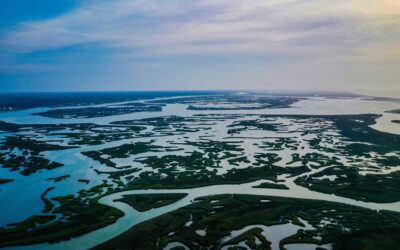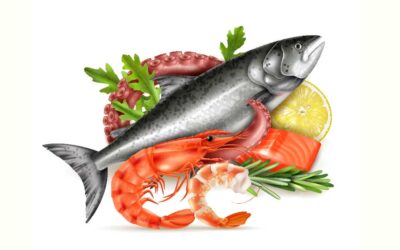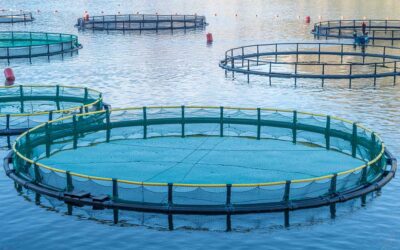
Aquaculture is a fast-growing industry in Australia, offering sustainable seafood production and employment in regional communities. As the industry grows, the need for national standards, clear oversight, and environmental accountability becomes critical. That’s where the National Aquaculture Monitoring and Reporting (NAMR) initiative steps in.
This article breaks down what NAMR is, how it’s used in Australian aquaculture, what the future holds, and the key tips for farm operators navigating this evolving landscape.
What is NAMR?
NAMR (National Aquaculture Monitoring and Reporting) is an initiative developed by the Australian Government to:
- Improve transparency in environmental monitoring of aquaculture activities
- Enable consistent and comparable data collection across jurisdictions
- Support informed decision-making by regulators, industry stakeholders, and the community
It operates as a centralised, science-based platform for collecting, storing, and sharing environmental and operational data from aquaculture farms around the country.
NAMR is managed by the Department of Agriculture, Fisheries and Forestry (DAFF) in collaboration with:
- State and Territory governments
- Aquaculture operators
- Environmental scientists and researchers
- Indigenous communities where relevant
Why Was NAMR Developed?
Australia has diverse aquaculture practices across its states and territories, each with unique environmental contexts and regulatory approaches. This diversity, while a strength, created challenges:
- Inconsistent reporting formatsbetween jurisdictions
- Limited access to comparable environmental dataacross the nation
- Duplication of reporting effortfor operators working in multiple states
- Public concernsabout the sustainability and environmental impact of aquaculture
NAMR was developed to harmonise environmental monitoring and streamline data reporting through a national framework.
How NAMR Works in Practice
NAMR does not replace existing regulations—it works alongside them. Here’s how the system is generally used:
1.Standardised Monitoring Framework
NAMR promotes a common environmental monitoring framework. It includes key indicators like:
- Water quality (e.g., temperature, dissolved oxygen, pH, nutrients)
- Sediment health
- Biodiversity impacts (e.g., on seagrasses or marine species)
- Escapee fish tracking
- Feed and waste input monitoring
This ensures that the same environmental markers are tracked consistently across farms and jurisdictions.
2.Digital Reporting Tools
Operators input monitoring results into NAMR through digital portals. These tools support:
- Easy upload of compliance data
- Dashboards for visualising trends
- Alerts when thresholds are breached
- Automatic compliance reports for regulators
This reduces paperwork and improves efficiency.
3.Public and Government Access
While operator-specific details are protected, the broader environmental findings can be made available to:
- Government regulators
- Environmental agencies
- Academic researchers
- General public (via summary dashboards)
This increases public trust in aquaculture’s environmental responsibility.
Current Use of NAMR in Australia
The rollout of NAMR is progressive. While not yet fully implemented in all jurisdictions, some key steps have been taken:
- Tasmania and South Australiahave been active in adopting the NAMR framework, with several salmon and shellfish farms participating in trials.
- Queensland and Western Australiaare integrating NAMR protocols into their environmental licensing processes.
- Federal agenciesare using NAMR data to inform national reporting on ocean health and aquaculture productivity.
Some farms have already reported improvements in decision-making based on NAMR data—especially in feed optimisation, reducing waste, and adjusting stocking densities in response to environmental trends.
Benefits of NAMR for Aquaculture Operators
Farm operators stand to gain a lot from engaging with NAMR:
✅ Better Environmental Management
- Track trends over time to avoid breaches before they happen
- Respond quickly to changes in water quality or sediment conditions
- Optimise feed rates and reduce nutrient discharge
✅ Streamlined Compliance
- Simplified reporting through a centralised portal
- Reduced duplication if working in multiple states
- Clear expectations on monitoring frequency and parameters
✅ Enhanced Market Reputation
- Transparency builds trust with retailers and consumers
- Better access to eco-labels and sustainability certifications
- Improves export readiness, especially for markets with strict environmental standards (e.g., EU, US)
Challenges and Considerations
While NAMR offers clear benefits, it also introduces challenges:
- Initial investmentin monitoring equipment or IT systems
- Training staffto use new tools and protocols
- Data privacy concerns, especially for proprietary operational methods
- Varying implementation pacebetween states
Smaller or remote operators may require financial support or technical assistance to participate effectively.
The Future of NAMR
NAMR is still evolving, but the direction is clear: national alignment and digital innovation. Here are some anticipated developments:
1.Mandatory Adoption
While currently voluntary in some areas, NAMR standards may become mandatory under state and federal environmental laws, especially for new aquaculture licensees.
2.Smart Monitoring Technology
The use of real-time sensors, drones, and remote sensing satellites will increase. NAMR is expected to integrate with these technologies to support:
- Live dashboards
- Predictive analytics for water quality
- Automated alerts for non-compliance
3.Carbon and Biodiversity Accounting
NAMR may expand to include:
- Carbon footprint tracking for farms
- Blue carbon credit eligibility (e.g., from seaweed farming or shellfish reefs)
- Biodiversity impact metrics, useful for environmental offsets
4.Indigenous Data Integration
There’s growing focus on including Indigenous ecological knowledge and co-management data—especially in the Northern Territory and Far North Queensland.
Tips for Aquaculture Operators
Whether you’re new to NAMR or already using it, here are practical steps to maximise its value:
1.Understand Your Regulatory Context
- Contact your local regulator to clarify whether NAMR is required for your operations
- Check if your jurisdiction offers grants or technical support for monitoring upgrades
2.Choose the Right Monitoring Equipment
- Invest in reliable, scalable tools (e.g., multiparameter water sensors, benthic cameras)
- Opt for systems that are NAMR-compatible, including data export formats
3.Train Your Team
- Offer staff workshops on NAMR protocols and reporting tools
- Appoint a dedicated compliance or data officer
4.Review Your Data Regularly
- Use NAMR dashboards to detect trends—don’t wait for audits
- Adjust farming practices proactively based on environmental results
5.Collaborate With Others
- Join industry bodies or working groups focused on NAMR
- Share insights with neighbouring farms to improve regional outcomes
Key Takeaways
- NAMR is a national initiative designed to improve environmental monitoring and reporting in aquaculture.
- It offers standardised data collection, centralised digital reporting, and transparency that benefits industry, government, and the public.
- While still in rollout phase, more states are aligning with NAMR and encouraging its adoption through incentives.
- The system is poised to grow, especially with real-time monitoring, carbon tracking, and Indigenous partnerships.
- Operators should start engaging with NAMR now to build readiness, streamline compliance, and enhance their sustainability reputation.
Need Help Navigating NAMR?
At Aquarius Lawyers, we understand the challenges and opportunities of operating in a tightly regulated environment. We assist aquaculture operators with:
- Environmental compliance audits
- Licensing applications
- Risk and governance frameworks
- Indigenous consultation protocols
- NAMR-related legal obligations.
Get in touch to ensure your business is future-ready and fully aligned with evolving industry standards and click on the link to obtain a copy of the NAMR Readiness Checklist.



